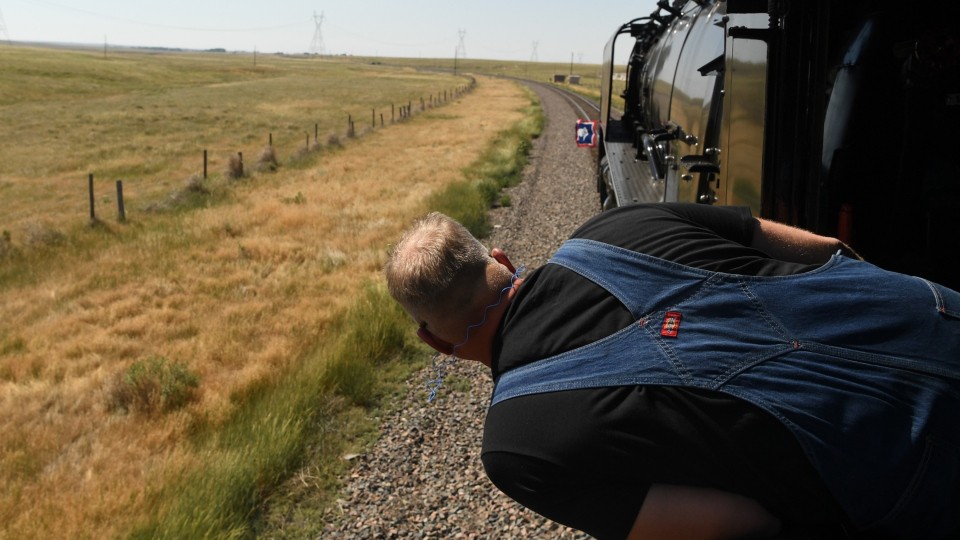Locomotive Engineers
Locomotive Engineer, Passenger Locomotive Engineer, Railroad Engineer, Transportation Specialist
 Select a military branch to see samples.
No similar titles were found.
Select a military branch to see samples.
No similar titles were found.
Railway Specialist (USAR only)
No similar titles were found.
No similar titles were found.
No similar titles were found.
No similar titles were found.
What they do:
Drive electric, diesel-electric, steam, or gas-turbine-electric locomotives to transport passengers or freight. Interpret train orders, electronic or manual signals, and railroad rules and regulations.
On the job, you would:
- Interpret train orders, signals, or railroad rules and regulations that govern the operation of locomotives.
- Confer with conductors or traffic control center personnel via radiophones to issue or receive information concerning stops, delays, or oncoming trains.
- Receive starting signals from conductors and use controls such as throttles or air brakes to drive electric, diesel-electric, steam, or gas turbine-electric locomotives.
Knowledge
Transportation
- movement of people or goods by air, rail, sea, or road
Safety and Government
- public safety and security
Arts and Humanities
- English language
Education and Training
- teaching and course design
Skills
Basic Skills
- listening to others, not interrupting, and asking good questions
- keeping track of how well people and/or groups are doing in order to make improvements
Problem Solving
- noticing a problem and figuring out the best way to solve it
Abilities
Controlled Movement
- quickly change the controls of a machine, car, truck or boat
- quickly decide if you should move your hand, foot, or other body part
Attention
- pay attention to something without being distracted
- do two or more things at the same time
Verbal
- communicate by speaking
- listen and understand what people say
Visual Understanding
- quickly compare groups of letters, numbers, pictures, or other things
Personality
People interested in this work like activities that include practical, hands-on problems and solutions.
They do well at jobs that need:
- Stress Tolerance
- Self-Control
- Cautiousness
- Integrity
- Attention to Detail
- Dependability
Technology
You might use software like this on the job:
Spreadsheet software
- Microsoft Excel
Expert system software
- Electronic train management systems ETMS
Word processing software
- Microsoft Word
Education
Education: (rated 2 of 5)
high school diploma/GED or
certificate after high school
usually needed
certificate after high school
usually needed
Job Outlook
Below Average
New job opportunities are less likely in the future.
Explore More
- Bus & Truck Mechanics & Diesel Engine Specialists
- Rail Yard Engineers, Dinkey Operators, & Hostlers
- Railroad Brake, Signal, & Switch Operators & Locomotive Firers
- Railroad Conductors & Yardmasters
- Subway & Streetcar Operators
You might like a career in one of these industries:
See more details at O*NET OnLine about Locomotive Engineers.





